3 min to read
As everything in life, there's always a learning curve…and Google had one too. This time frame experienced hardware and software interface improvements. Both have worked in a symbiotic way to produce a better user experience in terms of search. What we know, as users, from our search experience is that now this process is easier, smoother (on desktop, tablet, and mobile), and Google is able to give us what we are looking for.
But how does this affect the way we search in terms of pattern behavior, and what challenges does this represent for search engine optimization (SEO) and content production?
A recent Ahrefs study about long tail keywords can help us determine the answer. By analyzing 1.4 Billion keywords in the US database, the report shows us how the way we search is changing.
Keyword Length
The first question answered was the Keyword length distribution. We highlight the fact that more than 60% of keywords are 4 or 5+ words in length and 1 word keywords account for only 2.8%. This is a strong indicator of how users are using long tail keywords.
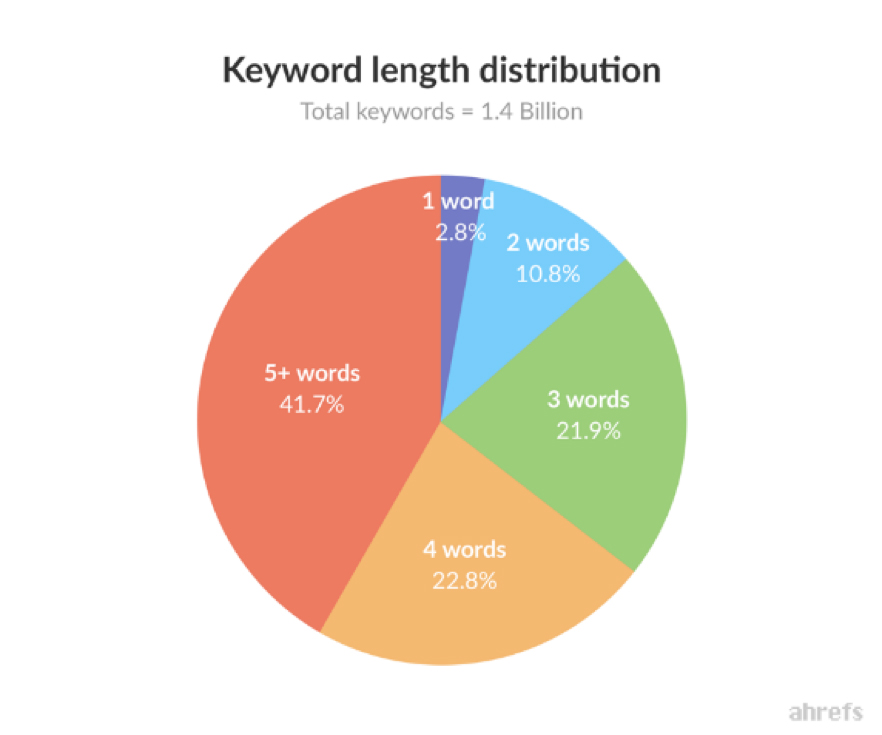
Keyword Search Volume
The Second question analyzed the distribution of keywords by monthly search volume. Search terms with up to 19 searches per month count as 93% of total searches, while search terms with up to 49 searches count as 3% of total searches.
This tell us that more that 96% of searches have less than 50 searches per month. This result reinforces the importance of long tail keywords for SEO. 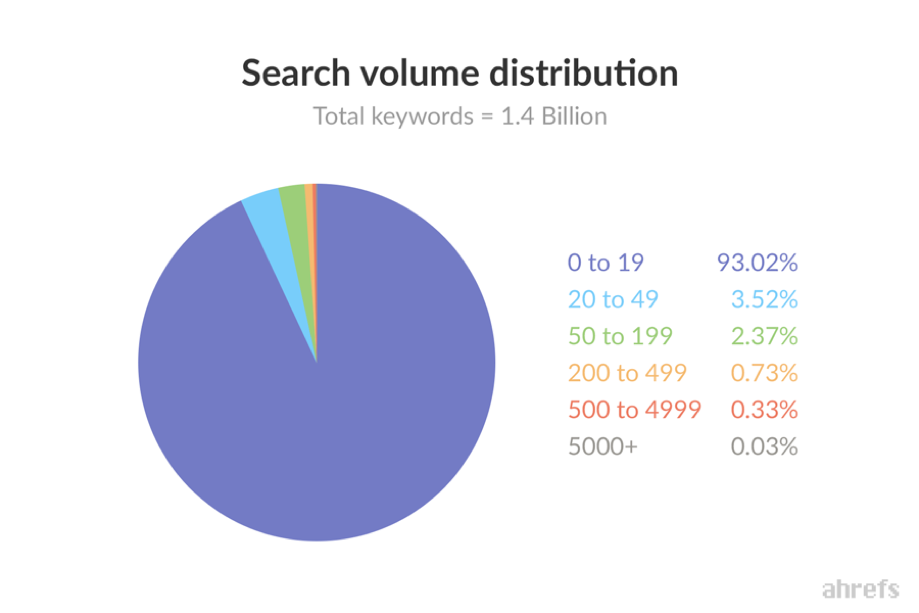
Keyword Length and Search Volume
As expected, the length of the keyword is correlated to the search volume. 1 word keywords show the highest monthly search volume. However, there are 2 and 3 word keywords length also showing strong search volume.
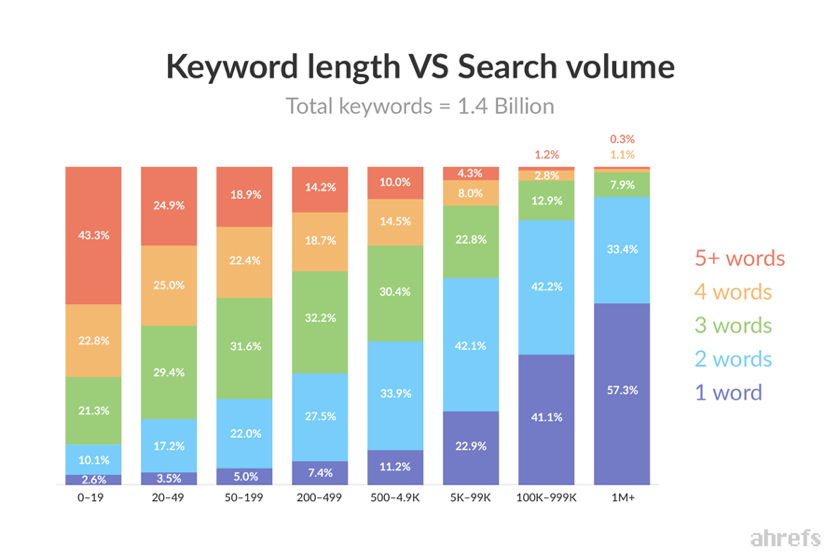
Aggregating the monthly search volume by keyword, Ahrefs got the values below, which tells us that in terms of monthly search volume, there’s no keyword length that stands out from the rest, and that there isn't a pattern determined by the length of keywords.
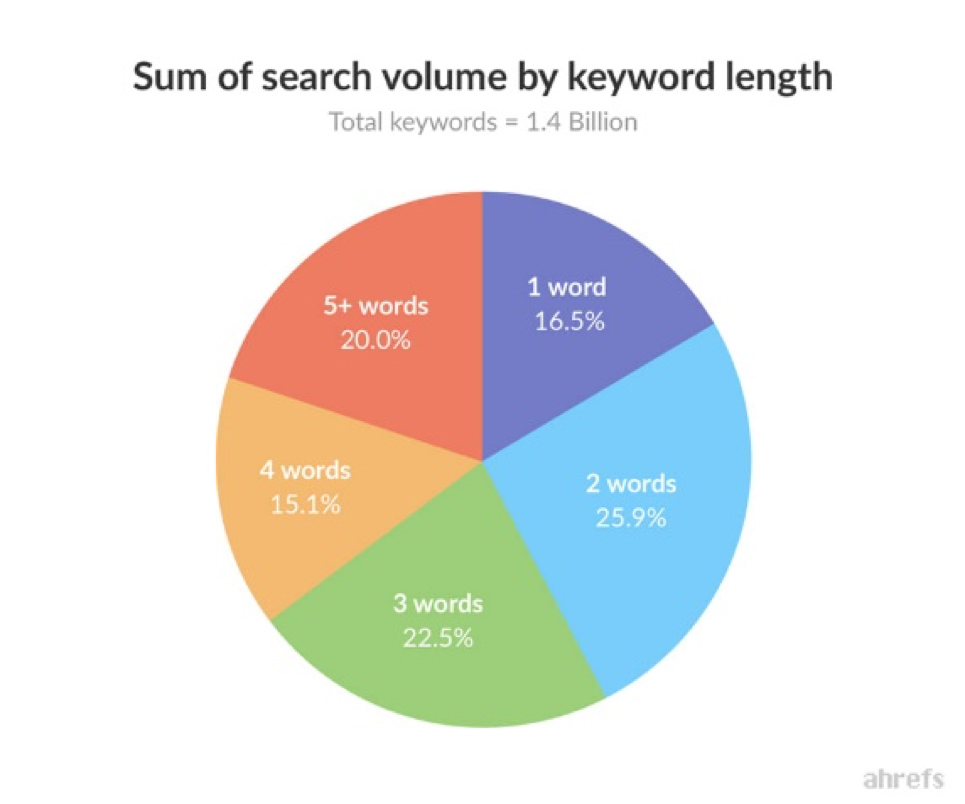
Straying from the search demand curve
So, what does this data reveal about long tail keywords? Remember the good ol’ search demand curve? It claims that the number of monthly searches shares an inverse relationship with number of keywords.
Like this:
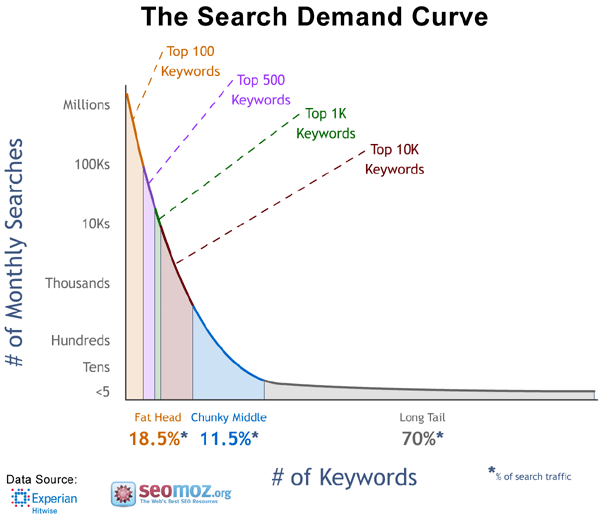
The Ahref’s study suggests that the long tail search demand curve, once revered as gospel for SEO specialists, may not be the best representation of keyword distribution anymore. We believe that this shift in pattern behavior happens when users realize that when they use long tail keywords, Google is able to provide them with more accurate results. Users are now more comfortable and confident in searching for exactly what they want, and using long tail keywords for this effort.
This reveals a trust factor in search engines, especially Google, that was not there before. Of course, for Google to rank sites on the SERPs when users type in long tail keywords, websites have to optimize their pages for this. This relationship between users, who are potential customers, and businesses, needs to be reciprocal. For them both to get the goal they want, they both need to optimize their searches and sites for those long tail keywords, that are inherently more specific and detail-oriented.
But will this pattern behavior spread across all devices? From a common-sense point, mobile would suggest that users would use less long tail keywords. If we put into the equation, mobile search and voice search, how should we delineate the way we produce content?
And considering Google will start to rank sites that are optimized for mobile above those that aren't, should we now move back away from long tail keywords to more instant, quick keyword stubs?
How will this search demand curve look in a few years time?
Big brands, such as L'Oréal are now changing the way they produce content, in accordance to the shift towards mobile search. There's no simple answer to this, but semantic search and keyword variation are some good guidelines to consider on your creative process. An invaluable consideration to remember is to always think from a user perspective.



Add comment ×